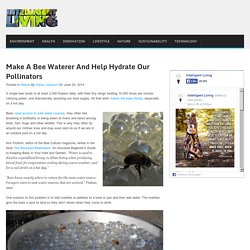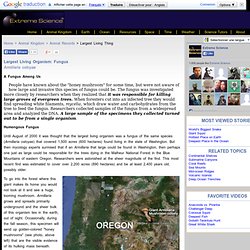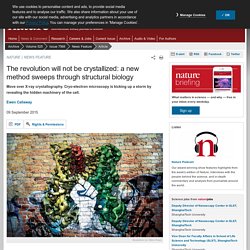

Resource Collections - BioEd Online. Microbial Life - Educational Resources. Teaching and learning about the diversity, ecology and evolution of the microbial world; discover the connections between microbial life, the history of the earth and our dependence on micro-organisms.

The expansive Sunset Lake of the Black Sand Basin is one of the largest thermal bodies of water in Yellowstone National Park. Details This site contains a variety of educational and supporting materials for students and teachers of microbiology. You will find information about microorganisms, extremophiles and extreme habitats, as well as links to online provides information about the ecology, diversity and evolution of micro-organisms for students, K-12 teachers, university faculty, and the general public.
Microbial Life in Extreme Environments: Mammoth Terraces, Yellowstone National Park. Microbial Life in Marine Environments: Pancake ice in Ross Sea, Antarctica. Find out more about the myriad of microorganisms that live in marine environments.
Biology. Animals. Browse for a bird by name and shape, All About Birds, Cornell Lab ofOrnithology. HOMES in the SKY. Make A Bee Waterer And Help Hydrate Our Pollinators. A single bee tends to at least 2,000 flowers daily, with their tiny wings beating 10,000 times per minute, carrying pollen, and dramatically assisting our food supply.

All that work makes the bees thirsty, especially on a hot day. Bees need access to safe water sources, they often risk drowning in birdbaths or being eaten at rivers and lakes among birds, fish, frogs and other wildlife. This is why they often fly around our clothes lines and may even land on us if we are in an outdoor pool on a hot day. Kim Flottum, editor of the Bee Culture magazine, writes in her book The Backyard Beekeeper: An Absolute Beginner’s Guide to Keeping Bees in Your Yard and Garden: “Water is used to dissolve crystallized honey, to dilute honey when producing larval food, for evaporation cooling during warm weather, and for a cool drink on a hot day.”
“Bees know exactly where to return for the same water source. One solution to this problem is to add marbles or pebbles to a bowl or pan and then add water. Apiary. Plants. PFAF. Azadirachta indica (neem tree) Datasheet Azadirachta indica (neem tree) Don't need the entire report?

Generate a print friendly version containing only the sections you need. Generate report Identity Top of page Preferred Scientific Name Azadirachta indica A. Preferred Common Name neem tree Other Scientific Names Antelaea canescens Cels ex Heynh.Antelaea javanica Gaertn.Azadirachta indica subsp. vartakii Kothari, Londhe & N.P.SinghAzadirachta indica var. minor ValetonAzadirachta indica var. siamensis ValentonMelia azadirachta L.Melia indica (A. International Common Names. Largest Living Thing. Home > Animal Kingdom > Animal Records > Largest Living Thing Largest Living Organism: Fungus Armillaria ostoyae A Fungus Among Us People have known about the "honey mushroom" for some time, but were not aware of how large and invasive this species of fungus could be.

The fungus was investigated more closely by researchers when they realized that it was responsible for killing large groves of evergreen trees. 200 year old Wisteria in Japan... so... - Antiques And Teacups. Forestimidible. The revolution will not be crystallized: a new method sweeps through structural biology : Nature News & Comment. Illustration by Viktor Koen In a basement room, deep in the bowels of a steel-clad building in Cambridge, a major insurgency is under way.

A hulking metal box, some three metres tall, is quietly beaming terabytes’ worth of data through thick orange cables that disappear off through the ceiling. It is one of the world’s most advanced cryo-electron microscopes: a device that uses electron beams to photograph frozen biological molecules and lay bare their molecular shapes. The microscope is so sensitive that a shout can ruin an experiment, says Sjors Scheres, a structural biologist at the UK Medical Research Council Laboratory of Molecular Biology (LMB), as he stands dwarfed beside the £5-million (US$7.7-million) piece of equipment.
Cryo-electron microscopy wins chemistry Nobel : Nature News & Comment. Left: Marietta Schupp/EMBL.

Centre: Jorg Meyer. Right: LMB-MRC. From left: Jacques Dubochet, Joachim Frank and Richard Henderson helped to develop cryo-electron microscopy. The 2017 Nobel Prize in Chemistry has been awarded for work that helps researchers see what biomolecules look like. Jacques Dubochet, Joachim Frank and Richard Henderson were awarded the prize on 4 October for their work in developing cryo-electron microscopy (cryo-EM), a technique that fires beams of electrons at proteins that have been frozen in solution, to deduce the biomolecules’ structure. For decades, biologists have used X-ray crystallography — blasting X-rays at crystallized proteins — to image biomolecular structures. Imaging solutions In the 1970s, Henderson, a molecular biologist who works at the MRC Laboratory of Molecular Biology in Cambridge, UK, and his colleague Nigel Unwin were trying to determine the shape of a protein called bacteriorhodopsin. Resolution revolution. Assessing patterns in introduction pathways of alien species by linking major invasion databases.
MEDIALIST. Free Biology Video Lecture courses. NOVA: The Hidden Power of Plants. CORPOREALIS. HÆLTH. MEDICA. PANDEMOCRACY. Bell Tolls. Virology. Zoonology. ECOLOGIC. AĒR. WÆTER. EORTHEN. BIOLOGIQUE. EORTHE. Plastikos. SCIENTIA. ALL of OUR BEAUTIFUL EARTH.